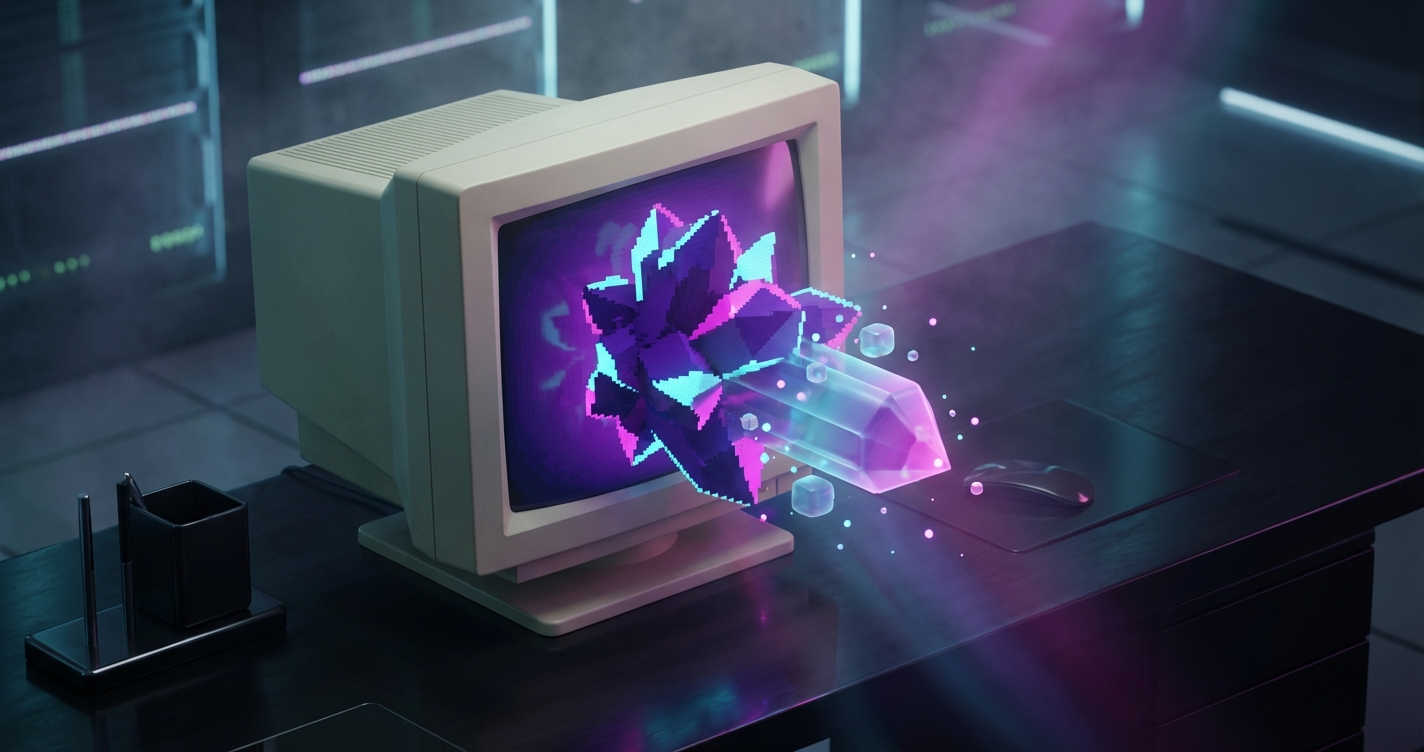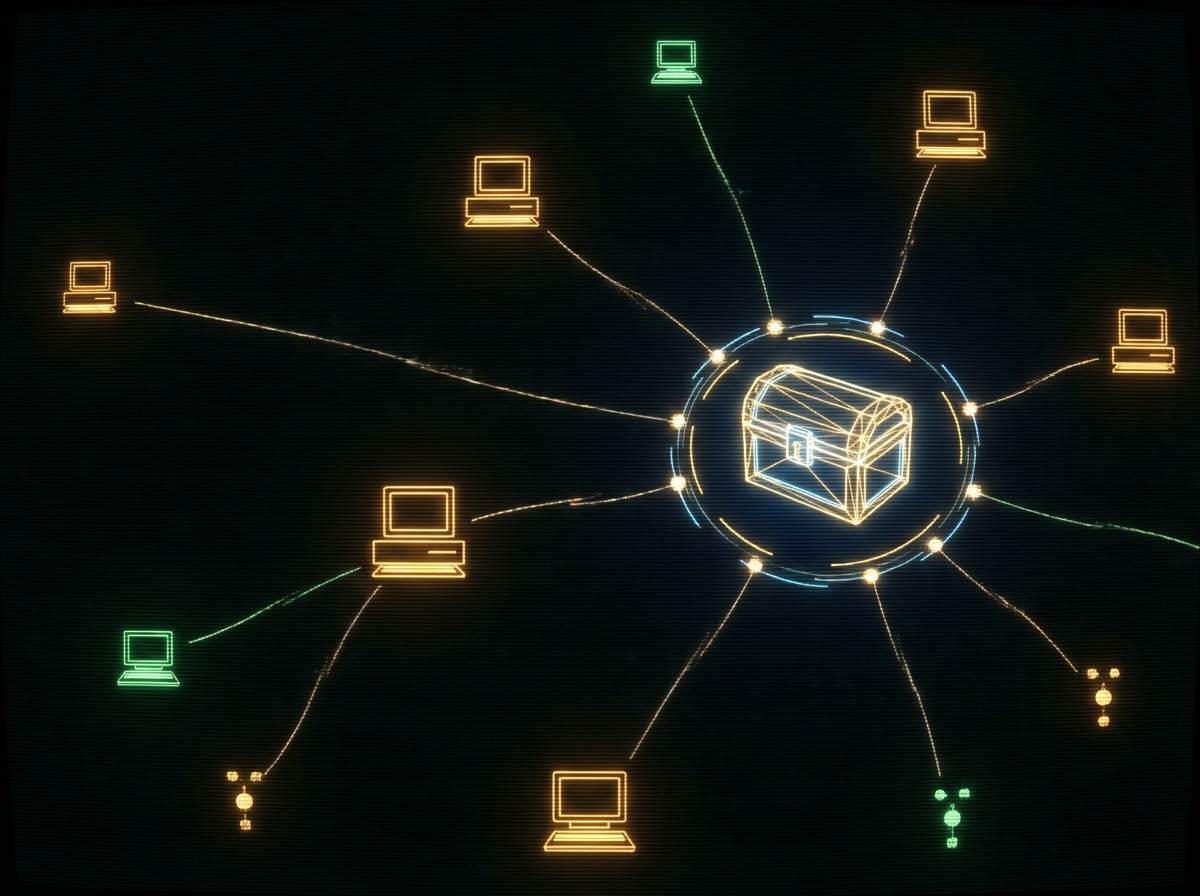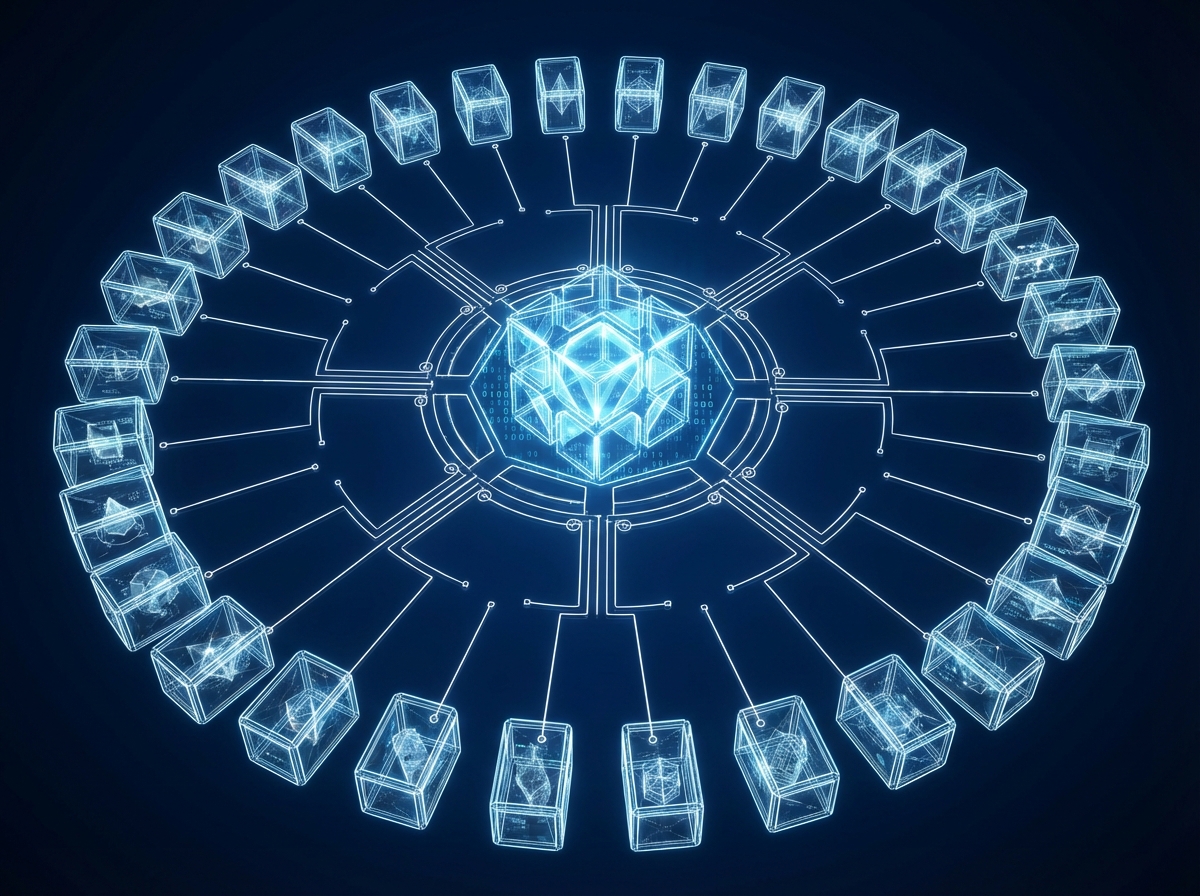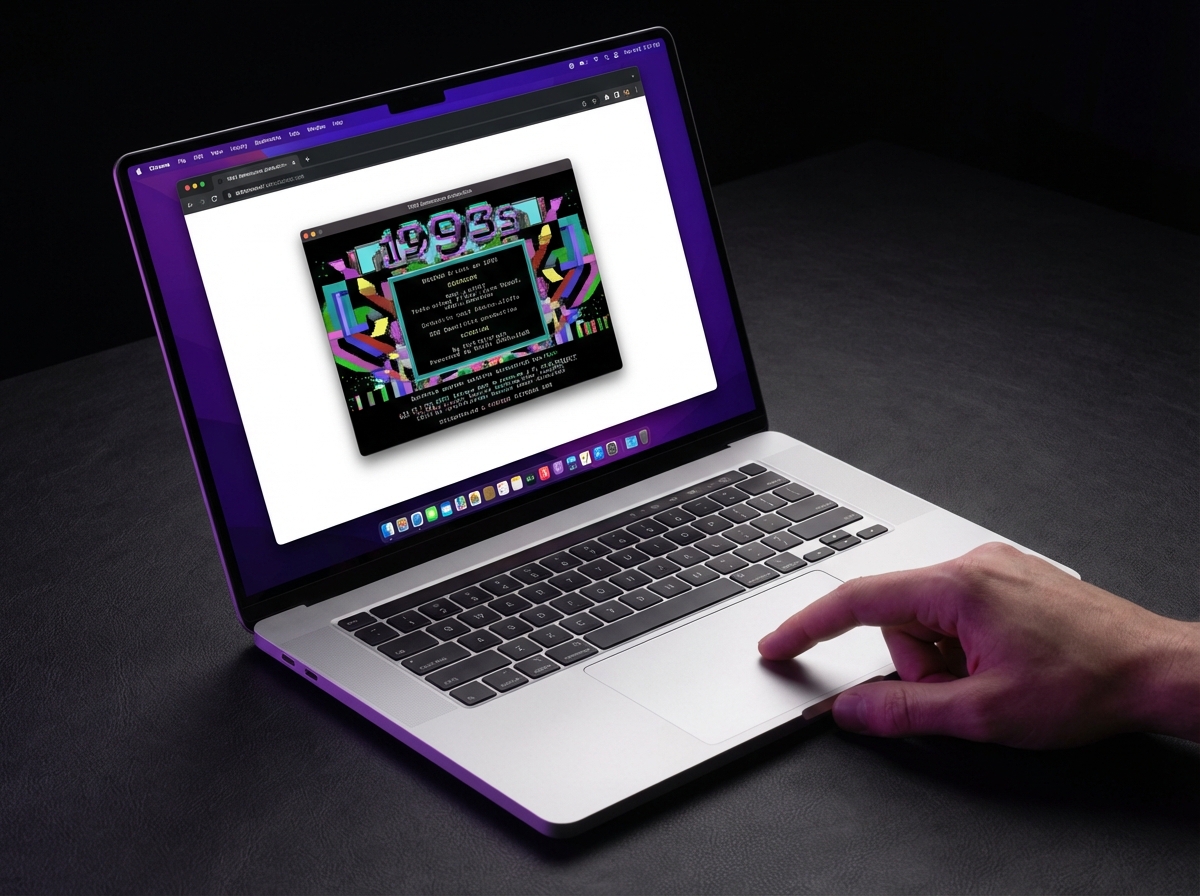
Thirty-two years ago today—October 7, 1993—Future Crew released Second Reality at Assembly ‘93 in Helsinki, Finland. It won first place in the PC demo competition and fundamentally changed what people thought was possible on IBM-compatible hardware. For a generation of developers, including myself, it was the moment that transformed computing from a tool into an art form.
I still remember the anticipation. The modem’s carrier tone. The glacial progress bar as the file downloaded from a local BBS at 14.4 kbps. The nervous excitement of typing SECOND.EXE and hoping my 486 DX2/66 was fast enough. Then the screen exploded with impossible graphics, pulsing to a soundtrack that shouldn’t have been possible on PC hardware.
That moment changed everything for me. And today, thanks to modern web technologies, you can experience it too—instantly, in your browser, without downloading anything: doskit.net/?app=secondreality
The BBS Era: When Demos Were Treasures
{{ alert(type=“note”, title=“Historical Context”, body=“In 1993, the World Wide Web was barely a year old and virtually unknown. The internet as we know it didn’t exist for most people. Instead, we had BBSes—Bulletin Board Systems—single-computer servers you dialed into with a modem, one user at a time.”) }}
The demoscene in the early 1990s existed in a fundamentally different technological landscape. There was no YouTube to watch demos. No GitHub to download source code. No Discord servers to discuss techniques. Instead, there were BBSes—hundreds of them, each a small island of digital culture accessible only through direct modem connection.
Finding Second Reality meant:
- Discovery: Hearing about it through word-of-mouth, reading about it in a text file, or seeing it mentioned in another demo’s credits
- Location: Finding a BBS that had it (not guaranteed—many boards had limited storage)
- Access: Hoping the BBS wasn’t busy (most had 1-4 phone lines maximum)
- Download: Waiting hours for the 2.4MB file to transfer, praying the connection didn’t drop
- Verification: Checking the file wasn’t corrupted during transfer
- Experience: Finally running it on your hardware, hoping it was compatible
This friction made demos precious. You didn’t casually click a link and watch. You invested time, effort, and often money (long-distance phone charges were real). When you finally got Second Reality running, you’d watched that progress bar for hours. You’d earned it.

{{ responsive_image(src=“/images/blog/2025/10/second-reality-vintage-crt-computer.jpg”, alt=“Vintage CRT computer monitor and keyboard from the early 1990s DOS era”, caption=“The hardware that made Second Reality possible: CRT monitors and keyboards were the gateway to demoscene magic in the early 1990s.”, attribution=“Photo by Sidney Ding on Unsplash”) }}
Technical Achievements That Defined an Era
What made Second Reality legendary wasn’t just that it looked good—it was that it did things people thought were impossible on PC hardware.

The Architecture: Elegant Modularity
When the source code was released in 2013 (celebrating the demo’s 20th anniversary), the demoscene community expected a monolithic mess of assembly code. Instead, they found something remarkable: a sophisticated, modular architecture that demonstrated genuine software engineering excellence.
The demo’s structure was revolutionary:
- The Loader: A minimal 20KB engine that handled initialization and part sequencing
- The DIS (Demo Interrupt Server): A custom interrupt handler providing services to all parts
- 32 Independent Executables: Each visual effect was a self-contained DOS program
This architecture enabled parallel development. Multiple team members could work simultaneously on different parts without conflicts. Each part had a 450KB memory budget and complete autonomy within that constraint. When a part finished, the loader simply overwrote it with the next one—elegant memory management through simplicity.
The codebase metrics tell the story:
Language files code
Assembly 99 33,350
C++ 121 24,551
C/C++ Header 8 654
Make 17 294
DOS Batch 71 253
Total: 316 59,102This wasn’t just assembly hackers pushing hardware limits. This was a team using the right tool for each job: assembly for performance-critical rendering, C++ for logic and coordination, makefiles for build automation. The codebase was nearly twice the size of the original Doom engine, yet remained maintainable through disciplined architecture.
{{ responsive_image(src=“/images/blog/2025/10/second-reality-code-featured.jpg”, alt=“Close-up of retro programming code with numbers and technical symbols”, caption=“Second Reality’s 59,000+ lines of assembly and C++ code represented sophisticated software engineering, not just hardware hacking.”, attribution=“Photo by Chris Stein on Unsplash”) }}
The Copper Simulator: Amiga Envy Solved
One of Second Reality’s most impressive technical achievements was simulating the Amiga’s Copper coprocessor on PC hardware. The Copper was a beloved feature of Amiga computers—a specialized processor that could execute programmed instruction streams synchronized with the video hardware, enabling effects that were difficult or impossible on PCs.
Future Crew didn’t accept this limitation. They built a Copper simulator using the PC’s 8254 Programmable Interval Timer (PIT) and 8259 Programmable Interrupt Controller (PIC). By carefully programming timer interrupts synchronized with VGA vertical retrace, they achieved similar capabilities:
- Triggering custom routines at specific scanline positions
- Changing palettes mid-frame for color cycling effects
- Synchronizing visual effects with music timing
- Enabling effects previously thought to require dedicated hardware
This wasn’t just clever programming—it was systems-level engineering that required deep understanding of PC hardware architecture, interrupt handling, and precise timing control.
{{ responsive_image(src=“/images/blog/2025/10/second-reality-abstract-gradient.jpg”, alt=“Abstract colorful gradient lights representing demoscene visual effects”, caption=“The Copper simulator enabled stunning visual effects like palette cycling and synchronized animations that defined the demoscene aesthetic.”, attribution=“Photo by Ralph Hutter on Unsplash”) }}
Development vs. Production: Seamless Workflow
The attention to developer experience was decades ahead of its time. The team built infrastructure that made the transition from development to production seamless:
Development Mode:
- DIS loaded as a TSR (Terminate and Stay Resident) program
- Each part ran as an independent executable
- Individual testing without running the full demo
- Standard DOS file I/O for loading assets
Production Mode:
- DIS embedded in the main executable
- All parts encrypted and appended to SECOND.EXE
- Custom DOS interrupt handlers for file operations
- Single 1.45MB executable containing everything
The genius was that parts didn’t need to know which mode they were running in. The same code worked in both environments. This is the kind of abstraction that modern developers take for granted in frameworks like Docker, but Future Crew built it in 1993 using assembly and C++.
Cultural Impact: From Demoscene to Game Industry
Second Reality’s influence extended far beyond the demoscene. Several Future Crew members went on to found Remedy Entertainment, the studio behind Max Payne, Alan Wake, and Control. The technical excellence and artistic vision that defined Second Reality became the foundation of a game development powerhouse.
This pattern repeated across the industry. The demoscene became a training ground for game developers, graphics programmers, and technical artists. The skills required to create demos—extreme optimization, creative problem-solving under constraints, real-time graphics programming—translated directly to game development.
The demoscene taught a generation of developers that constraints breed creativity. When you have 450KB for an entire visual effect including code and assets, you learn to be resourceful. When you’re targeting a 486 CPU without hardware acceleration, you learn to optimize. When you’re competing at Assembly, you learn to push boundaries.
The Spirit of Second Reality in Modern Development
What strikes me most about Second Reality, three decades later, is how its core principles remain relevant:
Modular Architecture: The part-based system anticipated modern microservices and component-based design. Each part was independently testable, deployable, and replaceable.
Developer Experience: The seamless dev/prod workflow anticipated modern development practices. The team understood that good tools enable great work.
Performance Optimization: The extreme optimization required for real-time effects on limited hardware taught principles that apply to modern web performance, mobile development, and embedded systems.
Collaborative Development: The architecture enabled parallel work without source control systems. Modern teams with Git and CI/CD pipelines can learn from this approach to enabling independent work.
Artistic Vision: Second Reality wasn’t just technically impressive—it was beautiful. The integration of music, visuals, and pacing created an emotional experience, not just a technical demonstration.

From BBS to Browser: DosKit and Instant Access
The contrast between 1993 and 2025 is striking. What once required hours of downloading and specific hardware now runs instantly in any modern browser. This transformation is what inspired DosKit—a tool I built to make DOS software instantly accessible through modern web technologies.
{{ alert(type=“tip”, title=“Experience Second Reality Now”, body=“DosKit enables instant browser-based access to Second Reality and other classic DOS software. No installation, no configuration—just click and experience computing history.”) }}
DosKit leverages WebAssembly to run a complete DOS environment in your browser. No installation. No configuration. No downloads. Just click and experience:
Try Second Reality now: doskit.net/?app=secondreality
For complete technical details about DosKit’s architecture and implementation, see the DosKit project page.
The technical implementation combines several modern web technologies:
- js-dos: A DOS emulator compiled to WebAssembly
- URL-based configuration: Apps load via query parameters
- Instant initialization: Pre-configured DOS environment
- Cross-platform compatibility: Works on desktop, mobile, tablets
What took hours in 1993 now takes seconds. The BBS download that required dedication and patience is now a single click. Yet the demo itself remains unchanged—the same code, the same effects, the same music that amazed people 32 years ago.
This accessibility matters. Second Reality isn’t just historical artifact—it’s a masterclass in software engineering, graphics programming, and creative problem-solving. Making it instantly accessible means new generations can experience it, learn from it, and be inspired by it.
{{ responsive_image(src=“/images/blog/2025/10/second-reality-gaming-featured.jpg”, alt=“Retro desktop computer setup with CRT monitor displaying vintage gaming content”, caption=“From hours-long BBS downloads to instant browser access: DosKit brings Second Reality and classic DOS software to modern devices with a single click.”, attribution=“Photo by P. L. on Unsplash”) }}
Lessons for Modern Developers
Second Reality offers lessons that transcend its era:
1. Constraints Drive Innovation
The 486 CPU, VGA graphics, and 450KB memory limits forced creative solutions. Modern developers often have nearly unlimited resources, but artificial constraints can drive better design. Try building a feature in half the memory budget. Optimize for slower devices. These constraints reveal inefficiencies and inspire elegant solutions.
2. Architecture Enables Collaboration
The modular part system let multiple developers work independently. Modern microservices and component architectures serve the same purpose. Good architecture isn’t about following patterns—it’s about enabling your team to work effectively.
3. Developer Experience Compounds
The seamless dev/prod workflow saved countless hours. Time invested in tooling, build systems, and developer experience pays dividends throughout a project’s lifetime. The best teams treat developer experience as a first-class concern.
4. Performance Is a Feature
Second Reality’s optimization wasn’t optional—it was essential. Modern web applications often neglect performance, assuming fast networks and powerful devices. But performance is user experience. Every millisecond matters.
5. Technical Excellence Serves Artistic Vision
Second Reality wasn’t just technically impressive—it was beautiful, emotional, memorable. The technical achievements served the artistic vision. Modern software should aspire to the same integration of technical excellence and user experience.
The Enduring Legacy
Thirty-two years later, Second Reality remains relevant. Not because the graphics still impress (though they’re charming), but because the engineering principles, creative problem-solving, and artistic vision remain exemplary.
The demo represents a moment when a small team in Finland showed the world what was possible with dedication, skill, and creativity. They didn’t have the best tools, the fastest hardware, or unlimited resources. They had constraints, talent, and vision.
That combination produced something that outlasted the hardware it ran on, the BBS networks that distributed it, and the era that created it. Second Reality endures because it represents excellence—technical, artistic, and collaborative.
And now, thanks to modern web technologies and tools like DosKit, that excellence is more accessible than ever. The hours-long BBS download is now a single click. The specific hardware requirements are now universal browser compatibility. The treasure that required dedication to obtain is now freely available to anyone curious enough to click a link.
Experience Second Reality today: doskit.net/?app=secondreality
The demo that changed my life as a kid is now just a URL away. That’s the kind of progress that would have seemed like science fiction in 1993. Yet here we are, celebrating 32 years of demoscene excellence, with the past instantly accessible in the present.
Happy anniversary, Second Reality. Thank you for showing us what’s possible.
Further Exploration:
- DosKit Project Page - Complete technical documentation and architecture details
- DosKit on GitHub - The open-source tool enabling instant DOS software access
- Try DosKit Live - Experience the platform with curated DOS software
- Second Reality Source Code - Released for the 20th anniversary
- Fabien Sanglard’s Code Review - Comprehensive technical analysis
- Second Reality on Pouët - Demoscene database entry with community comments
Have your own Second Reality memories? I’d love to hear them. The demoscene community thrives on shared experiences and collective nostalgia for an era when computing felt like magic.